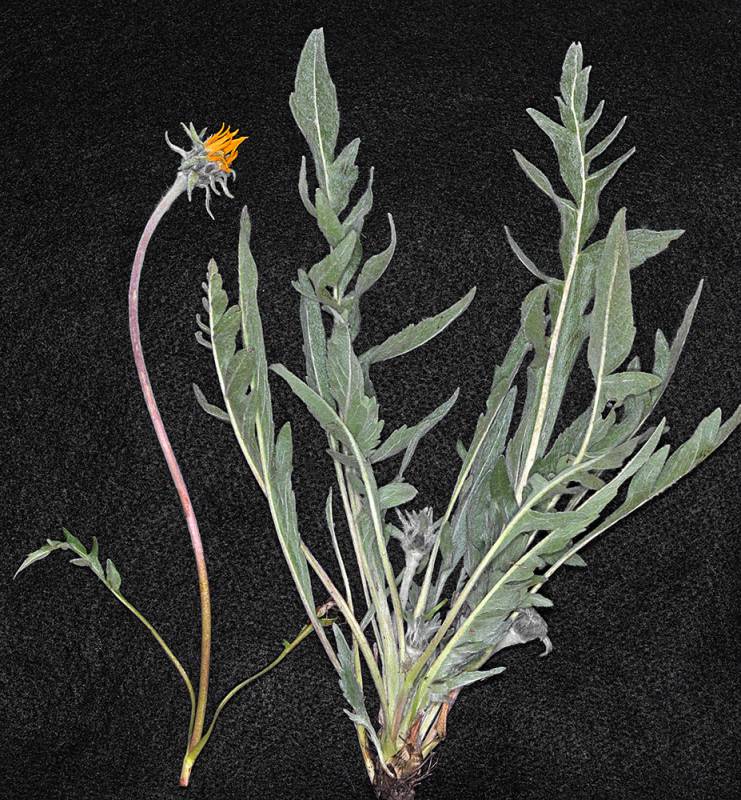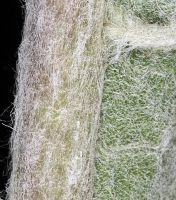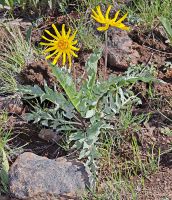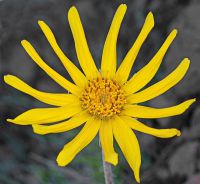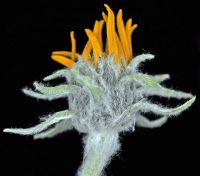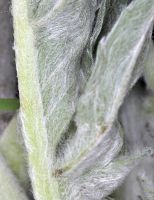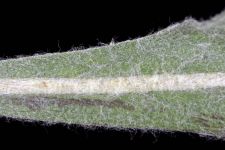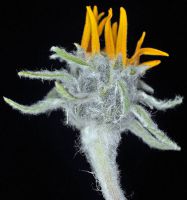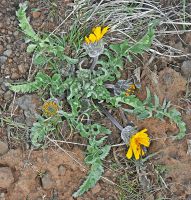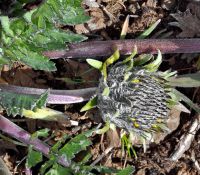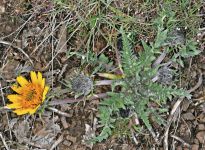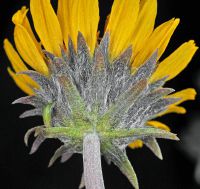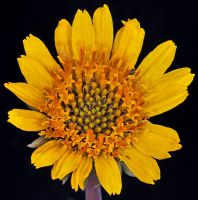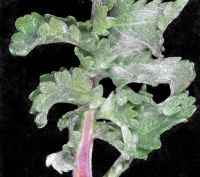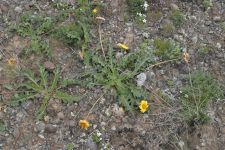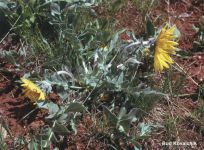Distribution: Occurring east of the Cascades crest in the southeastern counties in Washington; southeastern Washington to adjacent Oregon, east through Idaho to Montana and Wyoming.
Habitat: Mesic meadows and slopes at lower to moderate elevations in the mountains.
Flowers: May-July
Origin: Native
Growth Duration: Perennial
Conservation Status: Not of concern
Pollination: Bumblebees, bees, flies, butterflies, beetles, wasps
Perennial from a carrot-like taproot, 1.5-7 dm. tall.
Basal leaves 1-4.5 dm. long, pinnatifid, the divisions 1.5-6 cm. long, entire or with a few coarse teeth, up to 4 cm. wide; a pair of reduced, pinnatifid cauline leaves borne just above the base of the stem; leaves silky with long, soft, tangled hairs.
Heads solitary, large; involucre very woolly, its bracts ovate or lanceolate; rays about 13, pale yellow, 3-6 cm. long.
Achenes glabrous.
The silky-woolly hairs throughout the plant should separate B. incana from our other species with pinnatifid leaves, B. hookeri.
Publication: Trans. Amer. Philos. Soc., n. s. 7: 350. 1840.
PNW Herbaria: Specimen records of Balsamorhiza incana in the Consortium of Pacific Northwest Herbaria database.
WA Flora Checklist: Balsamorhiza incana checklist entry.
OregonFlora: Balsamorhiza incana information.
E-Flora BC: Balsamorhiza incana atlas page.
CalPhotos: Balsamorhiza incana photos.
USDA Plants: Balsamorhiza incana information.


